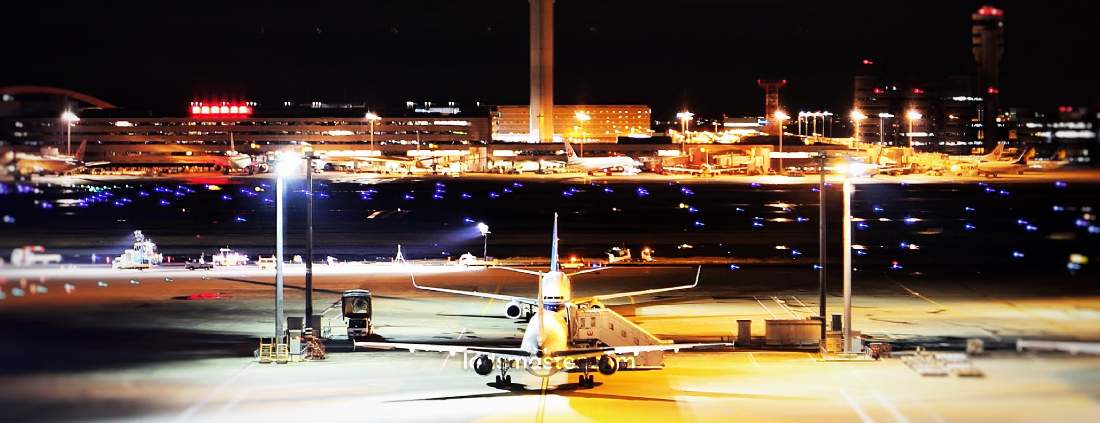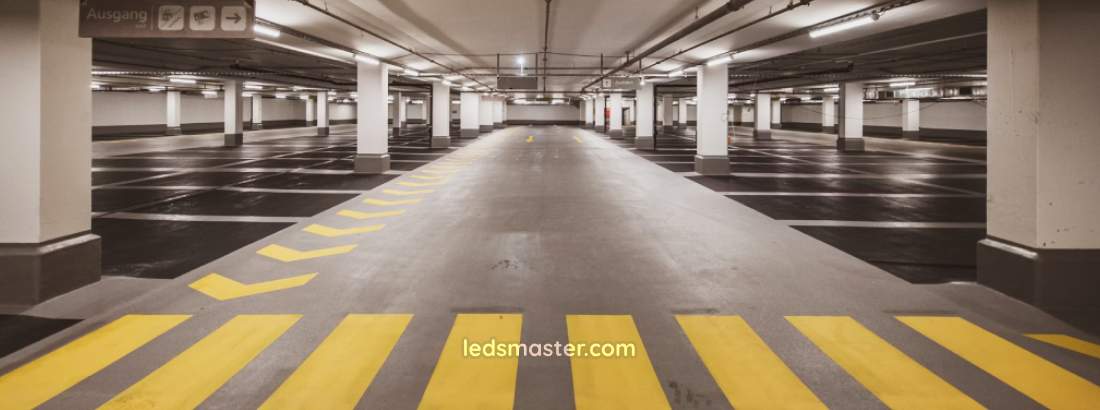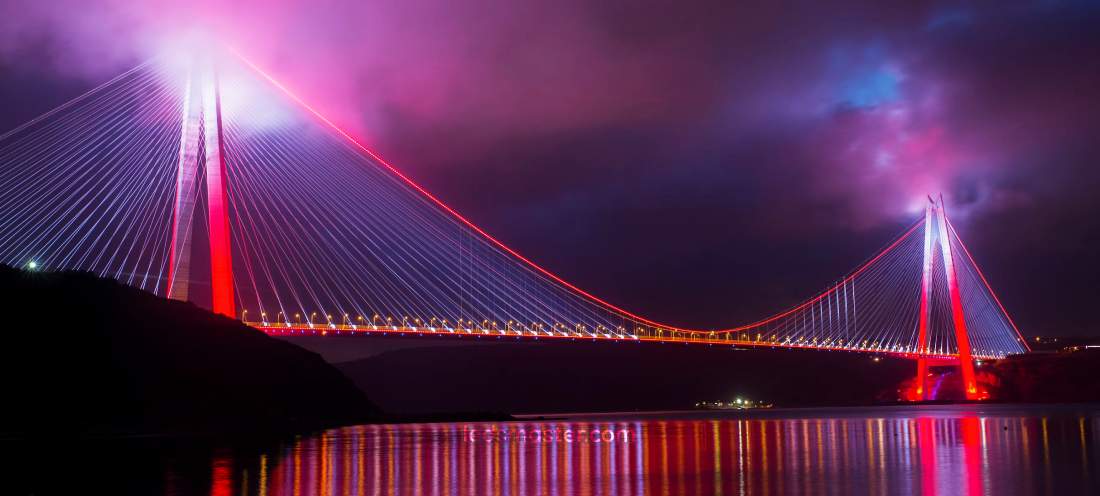Discover cutting-edge lighting solutions tailored for diverse commercial applications, including airports, parking lots, bridges, highways, and more. Our comprehensive resource hub offers insights, product details, and expert advice to illuminate your projects effectively.
Our advanced lighting technologies are meticulously crafted to enhance visibility, safety, and energy efficiency across a range of environments. Designed to improve the navigability of airport runways, secure parking lots, illuminate bridges, and brighten highways, our solutions deliver superior lighting that ensures clear and safe navigation. They incorporate energy-efficient designs that significantly reduce energy consumption and operational costs. Built to withstand harsh conditions, our robust solutions guarantee long-lasting performance. Additionally, we offer tailored lighting setups that meet specific project requirements and aesthetic preferences, providing the perfect fit for your unique needs.
Get your complimentary lighting design today
Table of Contents
ToggleCommercial lighting is a critical aspect of infrastructure that significantly impacts safety, functionality, aesthetics, and energy efficiency. Whether in airports, parking lots, bridges, or highways, the right lighting solutions enhance visibility, reduce accidents, lower operational costs, and contribute to a sense of security and well-being. The strategic implementation of lighting in commercial spaces is essential for optimal performance and user satisfaction.
In high-traffic areas such as airports and highways, proper lighting is crucial for preventing accidents and ensuring smooth operations. For commercial properties like parking lots and bridges, effective lighting deters criminal activities and enhances the structural aesthetics. Moreover, advancements in lighting technology have introduced energy-efficient solutions that not only improve illumination but also contribute to significant cost savings and environmental sustainability.

Airports require specialized lighting systems to ensure the safe and efficient movement of aircraft and passengers. Runway lighting is a vital component, guiding pilots during takeoff, landing, and taxiing operations. These lights must meet stringent regulations and provide high-intensity illumination to be visible under various weather conditions.
In addition to runway lighting, terminal lighting is crucial for enhancing passenger experience. Well-lit terminals create a welcoming ambiance and assist in the clear navigation of airport facilities. Modern airport lighting solutions also incorporate advanced controls and automation, allowing for energy-efficient operation and reduced maintenance costs. The integration of LED lighting, for instance, offers long-lasting performance and lower energy consumption compared to traditional lighting systems.

Effective lighting in parking lots is essential for safety and security. Adequate illumination deters criminal activities, prevents accidents, and helps users navigate the space efficiently. The design of parking lot lighting should consider factors such as light distribution, color temperature, and glare reduction.
LED lighting has become a popular choice for parking lots due to its energy efficiency, longevity, and superior light quality. High-intensity discharge (HID) lamps, once common in parking lot lighting, are increasingly being replaced by LEDs, which provide better illumination with lower energy consumption. Additionally, smart lighting solutions can further enhance efficiency by adjusting light levels based on occupancy or daylight availability, leading to additional energy savings and extended lifespan of the fixtures.

Bridge lighting serves both functional and aesthetic purposes. Functionally, it ensures safe passage for vehicles and pedestrians by providing adequate illumination of the bridge deck, sidewalks, and adjacent areas. Aesthetically, it highlights the architectural features of the bridge, creating a visually appealing landmark.
Designing lighting for bridges involves careful consideration of light placement, fixture type, and color rendering. LED lighting is preferred for its flexibility in design, energy efficiency, and ability to produce various colors and effects. Dynamic lighting systems can be employed to create stunning light shows or change the lighting based on special occasions or seasonal events. Proper maintenance and regular inspections are crucial to ensure the reliability and performance of bridge lighting systems.
Highway lighting is integral to road safety, enabling drivers to see road signs, obstacles, and other vehicles clearly. It reduces the risk of accidents and improves traffic flow, especially during nighttime and adverse weather conditions. Effective highway lighting design includes uniform light distribution, appropriate pole height, and minimizing light pollution and glare.
Modern highway lighting solutions focus on energy efficiency and environmental sustainability. LED luminaires are widely used for their long life, lower maintenance costs, and reduced energy consumption. Additionally, adaptive lighting systems can adjust light levels based on traffic volume, weather conditions, or time of day, further enhancing safety and efficiency while minimizing energy usage.
Retail lighting plays a crucial role in creating an inviting atmosphere, enhancing product displays, and influencing customer behavior. Effective lighting can highlight products, attract attention, and create a welcoming environment that encourages customers to explore and make purchases.
Retail spaces often utilize a combination of general, task, and accent lighting. General lighting provides overall illumination, while task lighting focuses on specific areas such as checkout counters or fitting rooms. Accent lighting is used to highlight products, signage, and displays, adding visual interest and drawing attention to key areas.
Determining the correct illumination level and the number of lights for commercial spaces is essential to ensure optimal functionality, safety, and efficiency. The recommended lux levels vary according to the type of space and the specific activities conducted within it. For airports, different areas have distinct lighting needs: runways typically require 50-100 lux for safe aircraft operations, taxiways need about 20-30 lux, and terminal areas, where visibility is crucial for passenger movement, should be lit to around 200-300 lux. Passenger lounges, which focus on comfort and clear visibility for reading or relaxing, often benefit from 300-500 lux.
In parking lots, adequate lighting is crucial for safety and security. General areas usually need between 50-100 lux, while high-traffic zones and entrances/exits may require brighter lighting, around 100-200 lux, to prevent accidents and facilitate navigation. For bridges, the lighting requirements are diverse: the bridge deck needs about 10-30 lux to ensure vehicle safety, pedestrian pathways typically require 30-50 lux, and architectural lighting can vary but often involves accent lighting of 20-50 lux to highlight structural features.
Highways, which prioritize driver visibility and safety, generally require 10-20 lux for regular roadways and slightly higher levels of 20-30 lux at intersections and interchanges to enhance visibility and reduce accidents. In sports stadiums, lighting needs to accommodate both the athletes and spectators. Recreational sports fields might need 200-500 lux, while professional venues, especially those used for broadcasting, often require 500-1500 lux to ensure clear visibility and enhance the viewing experience. Spectator areas within stadiums usually need 150-300 lux to ensure comfortable viewing and safe navigation.
In retail spaces, lighting plays a critical role in creating an inviting atmosphere and highlighting products. General sales areas typically require 300-500 lux to ensure that merchandise is well-lit and appealing. Display areas benefit from brighter lighting, around 500-1000 lux, to draw attention to key products, while checkout counters need about 500-700 lux to facilitate transactions and ensure that staff can handle money and products easily.
Calculating the number of lights required involves determining the total luminous flux needed, which is achieved by multiplying the desired lux level by the area of the space. For instance, lighting a 1,000 square meter parking lot to 100 lux would require 100,000 lumens in total. Selecting light fixtures that fit this requirement, such as LED fixtures that provide 10,000 lumens each, you would need approximately ten fixtures to achieve the desired illumination. Adjusting for factors like spacing, mounting height, and reflectance of surfaces ensures even distribution of light, enhancing the effectiveness and efficiency of the lighting design. Following industry standards and regulations helps in achieving compliant and safe lighting solutions for various commercial environments.
Energy efficiency has become a cornerstone of modern commercial lighting design, driven by the need to reduce operational costs and minimize environmental impact. Traditional lighting technologies, such as incandescent and fluorescent lamps, are increasingly being replaced by more advanced options like Light Emitting Diodes (LEDs). LEDs are at the forefront of this transformation due to their exceptional energy efficiency, longevity, and superior lighting quality.
LEDs consume significantly less energy than their traditional counterparts. An incandescent bulb converts only about 10% of its energy into light, with the remaining 90% lost as heat. Fluorescent lamps are more efficient but still lag behind LEDs, which convert nearly all the energy they consume into light, minimizing waste. This high efficiency translates into substantial energy savings, especially in commercial applications where lights may be in operation for extended periods.
The lifespan of LEDs far surpasses that of incandescent and fluorescent lamps. Incandescent bulbs typically last around 1,000 hours, while fluorescent lamps last between 7,000 and 15,000 hours. In contrast, LEDs can last 25,000 to 50,000 hours or more, drastically reducing the frequency of replacements and associated maintenance costs. This longevity not only benefits operational budgets but also reduces the environmental impact by minimizing waste and the demand for replacement materials.
In addition to their inherent efficiency, LEDs offer superior lighting quality. They provide consistent and high-quality illumination with better color rendering, which enhances the appearance of spaces and products. This is particularly important in retail and industrial environments, where accurate color representation can impact customer experience and productivity.
The integration of smart lighting controls further enhances the energy efficiency of commercial lighting systems. Occupancy sensors are widely used in spaces like offices, restrooms, and storage areas, where lights can be turned off when no one is present and automatically turned on when movement is detected. This prevents lights from being left on unnecessarily, reducing energy consumption.
Daylight harvesting systems are another innovative solution, which adjust artificial lighting based on the availability of natural light. These systems use sensors to measure the amount of daylight entering a space and dim or brighten the artificial lights accordingly. This not only saves energy but also creates a more comfortable and natural lighting environment.
Dimming capabilities allow for fine-tuning of light levels to suit specific tasks or times of day. In conference rooms or theaters, dimming lights for presentations or performances can reduce energy use while enhancing the ambiance. These systems can also be programmed to lower light levels during off-peak hours or when full brightness is not necessary, further conserving energy.
The integration of smart lighting with Building Management Systems (BMS) provides centralized control and monitoring of lighting throughout a facility. BMS can collect data on energy usage, occupancy patterns, and environmental conditions, allowing for real-time adjustments and automated responses to changing conditions. This centralized approach not only optimizes energy use but also simplifies maintenance and enhances the ability to manage lighting across large or complex buildings.
The future of commercial lighting is poised for remarkable transformation, driven by ongoing advancements in LED technology, smart lighting systems, and sustainable practices. These innovations promise to revolutionize how we illuminate commercial spaces, providing enhanced efficiency, improved user experience, and greater environmental sustainability.
LED technology continues to evolve, offering new capabilities that enhance the flexibility and effectiveness of lighting solutions. One of the most promising developments is tunable white LEDs, which allow the adjustment of color temperature to mimic natural daylight. This ability to change from warm to cool light on demand can significantly improve human comfort and productivity. For instance, in office environments, cooler light can be used during the day to boost alertness and concentration, while warmer light in the evening can promote relaxation. This tunability is also beneficial in retail spaces, where different lighting conditions can be used to highlight products or create various atmospheres to enhance the shopping experience.
The integration of the Internet of Things (IoT) into lighting systems is another groundbreaking trend shaping the future of commercial lighting. IoT-enabled lighting allows for more precise control, data collection, and analysis, leading to significant efficiencies and innovations. These smart systems can communicate with other building systems, such as HVAC and security, to optimize energy use and improve overall building performance.
For example, IoT-connected lighting can adjust brightness based on occupancy, daylight levels, and time of day, ensuring that lights are only used when and where needed. This not only saves energy but also extends the lifespan of the lighting fixtures. Moreover, IoT systems can provide valuable insights through data analytics, such as usage patterns and maintenance needs, enabling predictive maintenance and reducing downtime. The ability to remotely monitor and control lighting systems also offers convenience and enhances operational efficiency.
As sustainability becomes a critical focus for businesses and governments, sustainable lighting practices are gaining importance. These practices include the use of renewable energy sources, recyclable materials, and designs that minimize environmental impact. For instance, solar-powered lighting systems are increasingly used in areas like parking lots and pathways, reducing reliance on the grid and lowering energy costs. Innovations in energy storage, such as advanced battery technologies, further support the adoption of renewable energy in lighting.
Recyclable materials in lighting fixtures reduce waste and facilitate end-of-life recycling, aligning with circular economy principles. Additionally, the development of more efficient LEDs with lower energy consumption and reduced heat output contributes to overall sustainability goals. Advanced manufacturing techniques and materials science are also enabling the creation of more durable and environmentally friendly lighting products.
The increasing emphasis on environmental sustainability is driving the demand for eco-friendly lighting solutions. Businesses are increasingly aware of their environmental footprint and are adopting green lighting practices to meet corporate sustainability goals and comply with regulations. Governments and municipalities are also promoting sustainable lighting through incentives, regulations, and public initiatives, encouraging the adoption of energy-efficient and environmentally friendly technologies.
As a result, the market for sustainable lighting solutions is expanding, with innovations such as low-energy LEDs, smart controls, and solar-powered lighting becoming more prevalent. This trend is expected to continue, with ongoing research and development leading to new breakthroughs in energy efficiency and sustainability.
Commercial lighting is a multifaceted field that impacts safety, aesthetics, energy efficiency, and operational costs. From airports and parking lots to bridges and highways, effective lighting solutions are essential for enhancing functionality and user experience. The adoption of modern technologies, such as LED lighting and smart controls, offers significant benefits in terms of energy efficiency, performance, and sustainability. As the industry continues to evolve, the future of commercial lighting promises to bring innovative solutions that will further enhance the way we light up our commercial spaces.